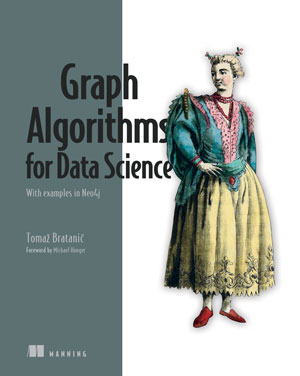
出版时间:2024.1
官网链接:Manning
下载地址:百度网盘(PDF)
内容简介:
Practical methods for analyzing your data with graphs, revealing hidden connections and new insights.
Graphs are the natural way to represent and understand connected data. This book explores the most important algorithms and techniques for graphs in data science, with concrete advice on implementation and deployment. You don’t need any graph experience to start benefiting from this insightful guide. These powerful graph algorithms are explained in clear, jargon-free text and illustrations that makes them easy to apply to your own projects.
In Graph Algorithms for Data Science you will learn:
- Labeled-property graph modeling
- Constructing a graph from structured data such as CSV or SQL
- NLP techniques to construct a graph from unstructured data
- Cypher query language syntax to manipulate data and extract insights
- Social network analysis algorithms like PageRank and community detection
- How to translate graph structure to a ML model input with node embedding models
- Using graph features in node classification and link prediction workflows
Graph Algorithms for Data Science is a hands-on guide to working with graph-based data in applications like machine learning, fraud detection, and business data analysis. It’s filled with fascinating and fun projects, demonstrating the ins-and-outs of graphs. You’ll gain practical skills by analyzing Twitter, building graphs with NLP techniques, and much more.
about the technology
A graph, put simply, is a network of connected data. Graphs are an efficient way to identify and explore the significant relationships naturally occurring within a dataset. This book presents the most important algorithms for graph data science with examples from machine learning, business applications, natural language processing, and more.
about the book
Graph Algorithms for Data Science shows you how to construct and analyze graphs from structured and unstructured data. In it, you’ll learn to apply graph algorithms like PageRank, community detection/clustering, and knowledge graph models by putting each new algorithm to work in a hands-on data project. This cutting-edge book also demonstrates how you can create graphs that optimize input for AI models using node embedding.
what’s inside
- Creating knowledge graphs
- Node classification and link prediction workflows
- NLP techniques for graph construction
about the reader
For data scientists who know machine learning basics. Examples use the Cypher query language, which is explained in the book.
about the author
Tomaž Bratanič works at the intersection of graphs and machine learning.
Arturo Geigel was the technical editor for this book.